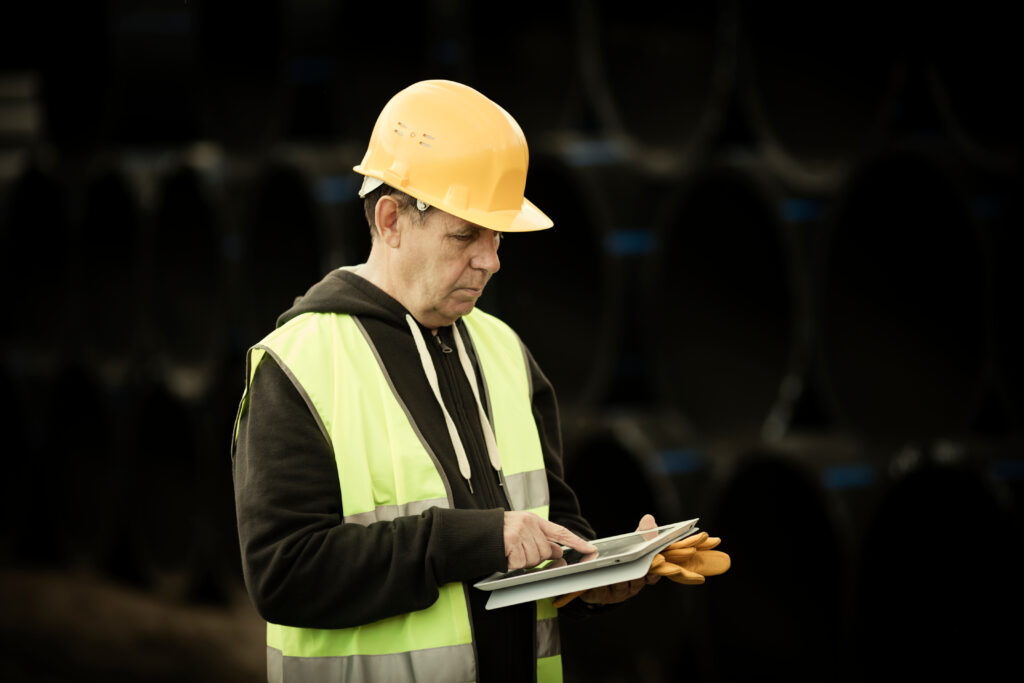Construction has traditionally lagged in digitization and technology adoption, but that has been changing rapidly over the past several years. Whether you’re talking about tech on-site or in the back office, most construction companies today are adopting labor-saving, time-saving, and collaboration tools designed to improve productivity, reduce mistakes, and even improve safety.
But construction technology isn’t limited to computers and handheld devices. Let’s look at all the construction technology you can expect to see more of this year.
Continued Collaboration
One of the biggest trends in construction technology, and one that shows no signs of slowing down this year, is the trend toward connecting every level of your construction organization through technology.
Tablets and other portable devices have become the norm on many construction sites, and some apps and programs collect field data in real-time for project management, health, safety, and other purposes. All of these applications are designed to capture construction project data and generate construction management reports.
If anything, we expect to see tools like these gaining even more popularity this year.
Owner Insite is built to allow your entire OAC team to collaborate.
Subscription and Cloud-Based Options
Upfront costs have historically been one of the reasons smaller construction companies have yet to adopt technology and digitization. Still, cloud-based subscription options have made these kinds of tools accessible to organizations of all sizes.
Most construction companies, even smaller organizations, can afford and justify monthly subscription costs. Cloud-based options do not require network or server upgrades, so they’re fast, easy, and affordable to deploy.
Niche-Specific Construction Software
Another significant change in the construction technology arena is that systems and options are built for different niches and company types within the industry.
Many smaller contractors avoided adopting enterprise-level software, which has traditionally been used by large corporations, simply because it was considered overkill, with many features that weren’t necessary.
Today, there are numerous options tailored to specific industry segments and even specialized trades. There are also, like Owner Insight, construction software tools for people who are in construction-related roles but are not directly involved.
Increasing Automation
One of the ways construction technologies are getting off the computer and tablet screen and into the field is through automated machines.
This trend has been driven increasingly by a shrinking workforce and by growing reluctance to get into the trades.
Whether it’s intelligent earthmoving equipment or automatic concrete finishing machines, the new era of construction machines is designed to accomplish tasks that traditionally use a larger workforce faster and with remarkable consistency and accuracy.
More GPS and Geolocation
For a long time, we all thought that GPS systems were for getting you to your construction site and tracking your construction vehicles, but today, they’re more likely to be plotting survey points or used for accurate site measurements.
GPS-based measuring devices are becoming increasingly popular on construction sites today, and we anticipate seeing more of them this year and in the future. Even hand-held GPS measuring devices plug directly into estimating and accounting systems, allowing estimators and project managers to get accurate, real-time information from anywhere.
Increasing Use of BIM and Digital Twins
3-dimensional imaging for construction projects is familiar, but we will see even more of it in 2024 and beyond.
Digital twins, particularly those that enable designers, architects, and engineers to create digital replicas of buildings before and during construction, will become increasingly prominent during the design and construction process.
We’ll also see many more companies adopt their 3-dimensional construction design and planning processes, standardize systems, and incorporate this kind of tech as the norm rather than the exception.
Internet of Things - IOT
The Internet of Things has been hit or miss in many instances. Most people still can’t determine the benefit of an internet fridge, and we can’t disagree.
However, when it comes to construction, the Internet of Things has numerous applications.
Innovative tools, for instance, can ensure that maintenance schedules are adhered to and even turn off equipment that is not safe to use. Drones are giving us eyes on remote construction sites or potentially hard-to-access parts of partially constructed buildings, and sensors warn teams of potential failures in formwork and shoring systems.
Construction Methods
Construction technology isn’t all about screens and sensors. Some of it is changing how we build from the ground up.
One big area to watch this year is 3D-printed buildings, which use enormous machines with pre-programmed instructions to produce structures.
Another is modular building. Design technology advances allow modular building companies to create incredible structures that we would never have imagined just a few years ago. That means we can build faster and with more predictable results, even on challenging sites.
Artificial Intelligence
Of course, you can’t write a tech article these days without mentioning AI. While there are still some bugs and limitations to be worked out in this technology, AI impacts design and planning in construction.
In fact, AI is already helping architects maximize space and functionality and predict potential trouble when used for various risk assessments and feasibility studies.
Artificial intelligence might not be ready to take over, but it’s very good at developing solutions that meet human-programmed parameters.
Tighter Financial Controls
Tighter financial controls are one of the most significant benefits of construction technology across all sectors.
Better estimating and project management systems help contractors to identify and solve problems faster. Most of the new content on the market is also designed to integrate with popular accounting systems from QuickBooks to Sage, which means finance and accounting teams can help spot potential problems earlier in the process.
Ever More Interconnected
It has taken some time for the construction industry to recognize the benefits of technology, but every indication suggests that things have changed dramatically.
Overall, we can expect construction to become even more connected at every level this year and in the future.
We’re fast approaching the point where anyone in any role, from finance to project management and quality control to safety, has granular access to the exact information they need when they need it.
As a company that develops software to keep project owners informed, we’re excited to see this evolution taking place. The better contractors and construction companies gather and share construction project documentation and information, the more control our customers can have over every step of the process.




